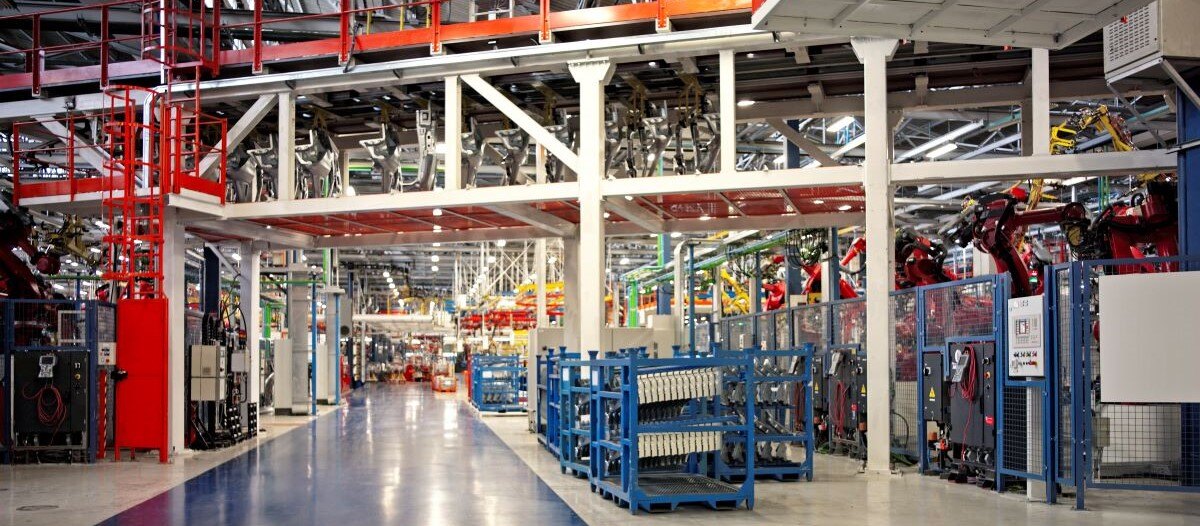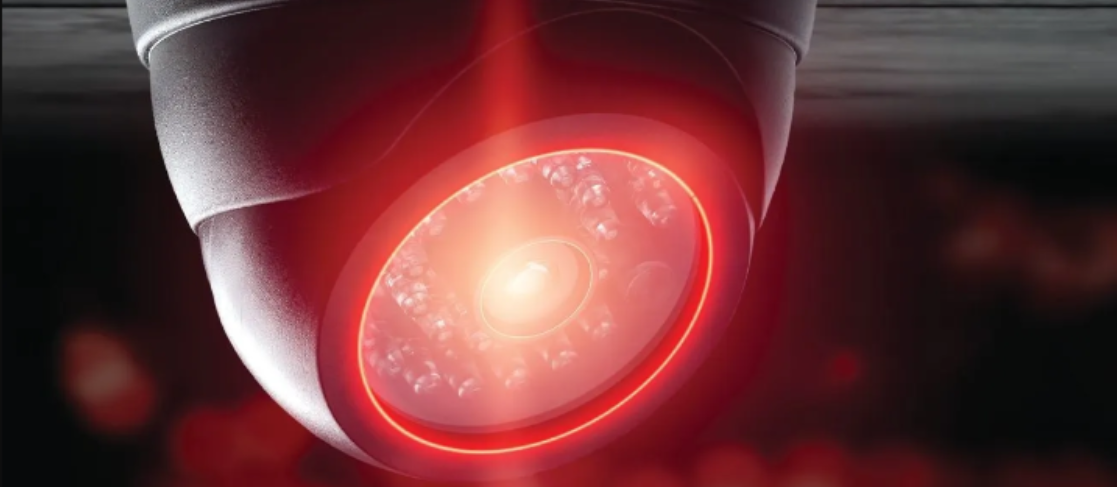Protecting Your Lighting Investment
Understanding the dangers of VOCs & reactive gases

According to the 2022 In-House Facility Management Benchmarking Survey Report, health, safety and improving facility and building image and security are the most important issues for plant managers and service contractors.
It is no secret that industrial facilities are home to some of the toughest environments in existence. Whether at the facility is a chemical plant, a manufacturing site or industrial facility, all equipment is likely carrying a hazardous rating Class I Div. 2, Class I Div. 1, IECEx/ATEX Zone 1 or Zone 2. What is less known, however, is how specifically these conditions can impact a site’s lighting which directly affects these important issues.
Good lighting helps to ensure facility and plant safety by clearly illuminating potential hazards, increasing alertness and reducing accidents by as much as 60 percent. Crisp, clear illumination can also help increase the clarity of security footage and improve building appearance. However, in industrial settings, lighting can be susceptible to harsh environmental conditions that can affect performance and overall fixture lifespan.
High-quality industrial-grade LED lighting manufacturers have made great strides in understanding the hazards present at facilities and introducing technologies to address some of the most common culprits of fixture decline, including high heat, vibration, power fluctuations and moisture. Every detail from power supplies and mechanical designs to coatings and corrosion-resistant hardware have all been optimized to allow for long-life and products warrantied for up to 10 years even in extreme environments. However, among the most elusive causes of reduced fixture performance have been volatile organic compounds (VOCs) and reactive gases. Not only are these pervasive in almost all facilities, but until recently, there were little to no proven solutions to protect industrial lighting from their impact.
Understanding VOCs and reactive gases
A wide variety of solvents, process oils and other materials that produce mist or vapors are common across nearly every manufacturing, industrial and plant facility. Like VOCs, reactive gases like hydrogen sulfur dioxide and chlorine are also emitted through building maintenance processes with a similar effect on lighting performance.
While most of the time VOCs go undetected, over time these materials can be devastating to lighting and facility safety, often causing chemical degradation of the LEDs and other electronic components. This results in color shifting or lumen depreciation, which affects visibility and clear illumination of hazards.
Concentrations of VOCs and reactive gases are everywhere and can be up to 10 times higher when present in indoor structures. Elevated temperatures promote their release, causing them to coat virtually any surrounding surface. Because VOCs are difficult to detect and prevent in such severe environments, many facilities and plants live with the burden and expense of constantly replacing lighting when performance starts to decline.
How LEDs are affected by VOCs and reactive gases
Even the most enclosed fixtures are not immune as VOCs can permeate silicone-based seals, discoloring the diode surface itself, and resulting in decreased light output and color shifting which diminishes visibility. One of the tell-tale signs includes lighting that shifts to more of a purple tone rather than a crisp white. Over time, this reduced visibility increases the risk for accidents and errors. Because the root cause of the loss of performance is the VOC itself, the change can be reversible if VOCs are able escape through ventilated luminaires. However, in hazardous locations, the presence of combustible airborne particles necessitates fully sealed fixtures which do not allow for venting of VOCs and other chemicals. Similarly, reactive gases can also damage the LEDs and sensitive connections that power the fixtures. However, the most harm caused is corrosive and irreversible making it even more essential to prevent damage before it starts.
Moreover, as it relates to hazardous locations, failing to install the proper hazardous location-certified products for facilities is extremely dangerous and puts employees at serious risk. Lighting in hazardous locations must adhere to the UL/CSA/IECEx/ATEX standards by law, as dictated by local jurisdictions. Not every manufacturer offers products for these conditions, and only certified products are compliant.
The hidden costs of impaired lighting
Inadequate visibility, exposed electrical parts and corroded fixtures from VOCs and reactive gases put workers at risk. Furthermore, lighting maintenance at industrial facilities is often deprioritized due to the difficulty in accessing the fixtures and the corresponding burden of production downtime. Faulty electrical fixtures account for 52 percent of fatalities, with the Occupational Safety and Health Administration (OSHA) continuing to identify poor lighting as the leading cause of injuries. Over the past decade alone, these accidents have cost companies billions of dollars in medical and compensation expenses. Worse yet, thousands of these accidents have resulted in loss of life, all of which could be prevented with better, more resilient lighting.
Providing a well-lit, vibrant work environment is essential for maintaining facilities and plants and improves overall building reputation and security. When overall illumination is increased, accident rates decrease as much as 60 percent, making it easier to perform work that requires precision and pay attention to detail. Improved lighting can also dramatically improve the clarity of closed-circuit camera systems, enhancing security.
But with VOCs and reactive gases in the atmosphere affecting the reliability and performance of fixtures, keeping up with lighting maintenance is a never-ending chore. Between the specialized equipment needed to reach high-mounted fixtures, the rewiring requirements for overloaded circuits and the need to keep plenty of replacement bulbs on hand for a wide range of fixture models, it can cost hundreds of thousands of dollars a year, just to maintain a building’s lighting. Not to mention the lost revenue due to production downtime to perform lighting maintenance.
Solutions to tackle VOCs and reactive gases have evolved
In recent years, LED chip manufacturers have focused on efficiency as well as driving current and maintaining LED temperatures rather than developing specialized protections against environmental factors. While evidence from multiple tests and studies have proven that sensitive electronic areas treated with protective coatings are significantly better protected than uncoated areas, component manufacturers have not commercialized protections to prevent these failure modes.
This has prompted some best-in-class fixture manufacturers to engineer advanced solutions to protect their products from the impacts of VOCs and reactive gases. Those specializing in the industrial sector are keenly aware of the environmental conditions that can wreak havoc on the lighting and are committed to offering solutions that protect customers’ employees and investment.
These solutions include VOC-resistant coatings, along with noble metal electrical contacts and protected conductive joints to resist corrosion and prevent VOCs and other chemicals from permeating through. This ensures that electrical components remain secure, all while delivering optimal output and visibility, even in the harshest environments. Upgrading facility lighting fixtures to high-efficiency, high-durability lighting such as VOC shielded LED fixtures can drastically improve overall employee safety and productivity, while decreasing maintenance costs. And as an additional bonus, the flexibility to group, dim and schedule lights around the unique needs of a facility and seamlessly integrate with existing factory automation maximizes energy savings.
Invest in tech that helps meet corporate objectives
It is no secret that high pressure sodium (HPS), metal halide and fluorescent lighting consume more energy than LEDs, which contributes directly to increased pollution and environmental impact. On top of massive operational savings and decreased maintenance, investing in resilient LED fixtures can help industrial facilities and work sites place a strong emphasis on operational efficiency and sustainability through overall emission reduction. In addition to their long-life performance, LED fixtures can cut electrical consumption and greenhouse gas emissions by as much as 90 percent compared to conventional fixtures. All of this makes investing in upgraded lighting a win for building safety, security and sustainability.
With the cost of maintaining lighting at industrial facilities being at an all-time high, investing in long-lasting products designed to withstand harsh industrial environments are a critical solution to ensure employee safety, plant security, and business continuity. For added peace of mind, seek out manufacturers whose warranty programs have been verified by third-party industry organizations.

Fariyal Khanbabi is the CEO at Dialight. Khanbabi brings over a decade of C-suite experience to her role, having formerly worked as CFO at Harvest Energy and Britannia Bulk, LTD. Having spent her entire career in the technology space, Khanbabi has become accustomed to being the only woman in the room and thus has proven to be a strong advocate for women in the workplace, especially in the LED industry.
References
cmmonline.com/resources/industry-research#industry-research-details-form
pubmed.ncbi.nlm.nih.gov/22188353/
Read more on Operations & Maintenance , Project Management and Risk Management
Explore All FMJ Topics









